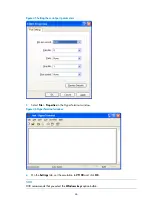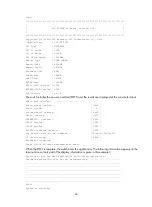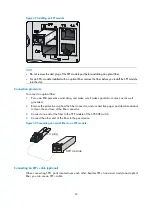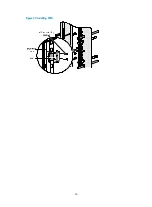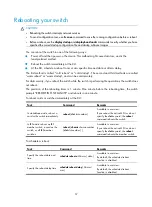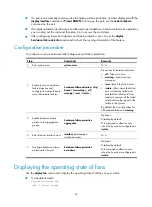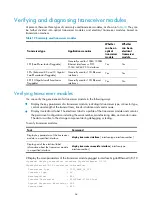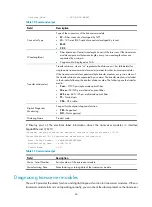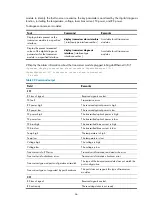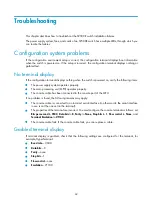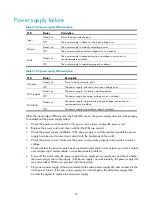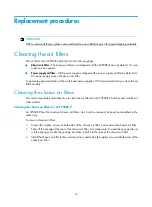
60
Table 17
Command output
Field Description
Slot
•
In standalone mode:
Slot
—Slot number of a card
•
In IRF mode:
Slot
—Slot number of a card on the specified member switch in the format of
member ID/slot number
Sensor
Temperature sensor:
•
hotspot
—Hotspot sensor
•
inflow
—Air inlet sensor
•
outflow
—Air outlet sensor
Temperature Current
temperature
Lower limit
Lower temperature threshold.
WarningLimit
Warning temperature threshold
AlarmLimit
Alarming temperature threshold
ShutdownLimit Shut-down
temperature
threshold (currently not supported)
Isolating a card and locating card faults
When the switch detects a card failure or upgrades a logic of the CPU daughter card on a card, you can
isolate the faulty card or the CPU daughter card to prevent it from forwarding data packets. This
operation allows for convenient on-site fault location or upgrading while causing no interference on the
operation of the system and services of other cards.
Configuration guidelines
•
The active MPU cannot be isolated. If the Standby MPU is isolated, the load mode of the active MPU
becomes
load-single
.
•
Before upgrading a logic of the line card, keep the line card offline.
•
No other commands but the
test diag-offline
command can be executed for an isolated card.
Otherwise, the configuration cannot take effect. After isolating a card, you can use the
test
diag-offline
command to collect the fault location information of the card.
•
When you execute the
test diag-offline
command, the path where the fault detection information is
saved is also displayed following the fault detection information on the terminal. For example, you
can see flash:/diag_slot3_20080522_103458.txt.
•
Use the
display device
command to view whether a card is isolated, or, whether the card is in the
offline state.
•
Deliver the fault detection information to the professional technical engineers.
Configuration procedure
To isolate a card and locate card faults:

